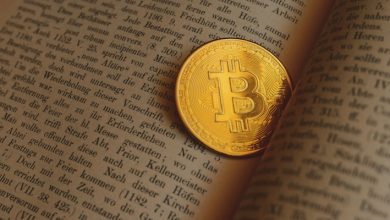How to Get Started with Blockchain Development

- Understanding the basics of blockchain technology
- Choosing the right programming language for blockchain development
- Setting up your development environment for blockchain projects
- Exploring popular blockchain platforms and frameworks
- Learning how to create smart contracts on the blockchain
- Joining online communities and resources for blockchain developers
Understanding the basics of blockchain technology
Blockchain technology is a decentralized and distributed ledger that records transactions across multiple computers in a secure and tamper-proof manner. It enables secure, transparent, and efficient peer-to-peer transactions without the need for intermediaries. The blockchain is made up of blocks of data that are linked together in a chronological order, forming a chain.
One of the key concepts in blockchain technology is cryptography, which ensures the security and integrity of the data stored on the blockchain. Each block contains a cryptographic hash of the previous block, making it virtually impossible to alter the data without being detected. This makes blockchain technology highly secure and resistant to fraud.
Another important aspect of blockchain technology is consensus mechanisms, which are used to validate transactions and add them to the blockchain. Some common consensus mechanisms include Proof of Work (PoW) and Proof of Stake (PoS). These mechanisms ensure that all participants in the network agree on the validity of transactions, making the blockchain trustworthy and reliable.
Blockchain technology has a wide range of applications beyond cryptocurrencies, including supply chain management, healthcare, voting systems, and more. By understanding the basics of blockchain technology, you can start exploring its potential and developing innovative solutions that leverage its unique features.
Choosing the right programming language for blockchain development
When it comes to blockchain development, choosing the right programming language is crucial for success. There are several popular languages that developers often use for blockchain projects, each with its strengths and weaknesses.
One popular programming language for blockchain development is Solidity. Solidity is specifically designed for writing smart contracts on the Ethereum platform. It is known for its simplicity and is relatively easy to learn for developers familiar with object-oriented programming languages like C++ or Java.
Another language commonly used in blockchain development is JavaScript. JavaScript is a versatile language that is widely used for web development, making it a popular choice for blockchain projects that require frontend development. It also has a large community of developers, making it easier to find support and resources.
Python is another language that is gaining popularity in the blockchain space. Python is known for its readability and ease of use, making it a great choice for developers looking to quickly prototype and test blockchain applications. It also has a wide range of libraries and frameworks that can be used to streamline development.
Ultimately, the best programming language for blockchain development will depend on the specific requirements of your project and your team’s expertise. It’s important to consider factors like security, scalability, and community support when choosing a language for your blockchain development project. By carefully evaluating your options and selecting the right language for your needs, you can set yourself up for success in the world of blockchain development.
Setting up your development environment for blockchain projects
To set up your development environment for blockchain projects, you will need to start by installing the necessary software and tools. One key software you will need is a blockchain platform. Ethereum is a popular choice for blockchain development due to its flexibility and smart contract functionality.
Next, you will need to choose an Integrated Development Environment (IDE) for coding your blockchain projects. Visual Studio Code is a versatile IDE that supports multiple programming languages and has extensions available for blockchain development.
Additionally, you will need to install Git, a version control system, to track changes in your code and collaborate with other developers. Git is essential for managing the codebase of your blockchain projects efficiently.
Lastly, make sure to set up a local blockchain network for testing your projects. Ganache is a popular tool that allows you to create a personal Ethereum blockchain for development and testing purposes. This will help you simulate real-world blockchain scenarios in a controlled environment.
By following these steps and setting up your development environment with the necessary software and tools, you will be well-equipped to start working on blockchain projects effectively and efficiently.
Exploring popular blockchain platforms and frameworks
When starting your journey into blockchain development, it is essential to explore popular blockchain platforms and frameworks that can help you build decentralized applications efficiently. Understanding the different options available will allow you to choose the best tools for your specific project needs.
One widely used blockchain platform is Ethereum, known for its smart contract functionality and robust development community. Developers can leverage Ethereum’s platform to create custom tokens, decentralized applications, and more. Another popular option is Hyperledger Fabric, a permissioned blockchain framework that is suitable for enterprise use cases. Hyperledger Fabric provides a modular architecture that allows for flexibility and scalability in developing blockchain solutions.
For those looking to build on a more scalable platform, platforms like EOS and Tron offer high transaction speeds and low fees. These platforms are known for their ability to support large-scale decentralized applications with millions of users. Additionally, platforms like Corda and Quorum are designed for specific industries such as finance and supply chain management, offering tailored solutions for those sectors.
Exploring these popular blockchain platforms and frameworks will give you a solid foundation to start your blockchain development journey. By understanding the strengths and weaknesses of each option, you can make informed decisions on which platform will best suit your project requirements. Remember to stay up to date with the latest developments in the blockchain space to ensure you are using the most cutting-edge tools available for your projects.
Learning how to create smart contracts on the blockchain
Once you have a basic understanding of blockchain technology, the next step is to learn how to create smart contracts on the blockchain. Smart contracts are self-executing contracts with the terms of the agreement between buyer and seller being directly written into lines of code. This allows for transactions and agreements to be carried out automatically without the need for intermediaries.
To start creating smart contracts, you will need to choose a blockchain platform to work with. Some popular options include Ethereum, Hyperledger, and EOS. Each platform has its own programming languages and tools for creating smart contracts.
Once you have selected a blockchain platform, you will need to familiarize yourself with the programming language used to write smart contracts on that platform. For example, Ethereum uses Solidity, while Hyperledger uses Chaincode.
After learning the programming language, you can start writing your smart contract code. This code will define the rules and conditions of the contract, as well as the actions that should be taken automatically when those conditions are met.
It is important to thoroughly test your smart contract code before deploying it on the blockchain to ensure that it functions as intended and is free from bugs or vulnerabilities. Once you are confident in your code, you can deploy the smart contract onto the blockchain network.
By learning how to create smart contracts on the blockchain, you can take advantage of the many benefits that this technology offers, such as increased security, transparency, and efficiency in transactions. With the right skills and knowledge, you can become a valuable asset in the field of blockchain development.
Joining online communities and resources for blockchain developers
Joining online communities and resources for blockchain developers can be extremely beneficial for those looking to get started in this field. These communities provide a wealth of knowledge and support from experienced developers, making it easier for beginners to learn the ins and outs of blockchain development. Here are some ways you can leverage online communities and resources to kickstart your journey:
- Join forums and discussion boards dedicated to blockchain development. Platforms like Stack Overflow and Reddit have active communities where developers can ask questions, share insights, and connect with others in the industry.
- Follow blockchain influencers and experts on social media platforms like Twitter and LinkedIn. They often share valuable resources, tips, and updates on the latest trends in blockchain technology.
- Attend webinars, workshops, and virtual events hosted by blockchain organizations and companies. These events provide opportunities to network with professionals in the field and gain hands-on experience through interactive sessions.
- Explore online courses and tutorials on platforms like Coursera, Udemy, and Codecademy. These resources offer structured learning paths for beginners to build foundational knowledge in blockchain development.
By actively participating in online communities and leveraging resources tailored for blockchain developers, you can accelerate your learning process and stay updated on the latest advancements in this rapidly evolving industry. Remember to engage with others, ask questions, and share your own insights to make the most out of these valuable resources.



